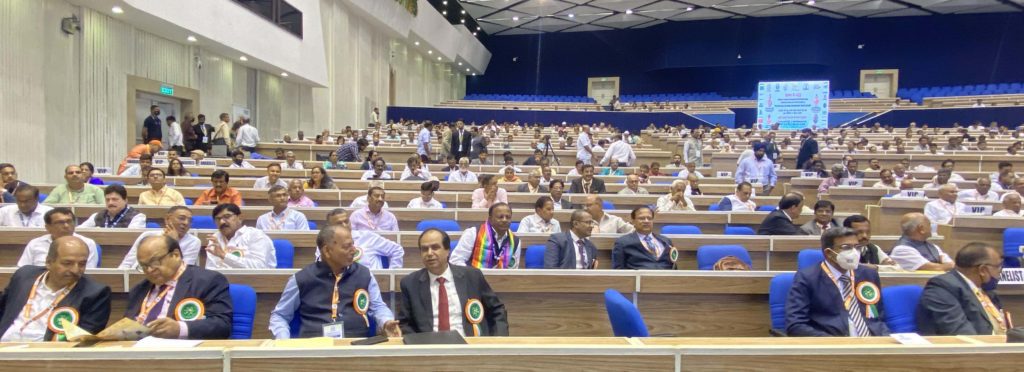In response to urban cooperative banks’ long pending demand that a uniform framework cannot be applied to the entire sector, RBI has issued a revised Regulatory Framework based on scope & size of UCBs.
NAFCUB, the apex body of UCBs in the country, had earlier demanded that friendly and neighbourhood ideas with which UCBs are associated, must be kept intact. “While some UCBs like Saraswat Bank or Cosmos Bank compete with commercial banks, the majority of UCBs are unit banks having a single branch for operation. Expecting them to fulfil tough regulatory conditions means killing their friendly image”, they argue.
Keeping these issues in mind, the RBI had constituted an Expert Committee on February 15, 2021 under the Chairmanship of N. S. Vishwanathan, former Deputy Governor to examine the issues in the UCB sector, provide a medium-term road map, suggest measures for faster resolution of UCBs and recommend suitable regulatory/ supervisory changes for strengthening the sector by leveraging the recent amendments to Banking Regulation Act, 1949 (As Applicable to Cooperative Societies).
The report submitted by the Expert Committee was placed on the RBI’s website on August 23, 2021 inviting comments of stakeholders and members of the public. The recommendations of the Committee have since been examined for implementation duly factoring in the feedback received.
On Tuesday, RBI accepted the recommendations of the Committee and announced a revised regulatory framework for urban cooperative banks (UCBs) based on the size of deposits and their area of operations.
A Reserve Bank of India (RBI) committee has recommended a four-tier regulatory framework for urban cooperative banks (UCBs) based on the size of deposits and their area of operations.
The differentiated regulatory approach was mainly recommended for key parameters such as net worth, capital to risk-weighted assets ratio (CRAR), branch expansion and exposure limits, according to the central bank.
Under the revised approach,the Tier 1 category will consist of all unit and salary earner’s UCBs, irrespective of deposit size, the central bank said in a release. This category will also include all other UCBs having deposits up to Rs 100 crore, the regulator said. The second tier or Tier 2 will consist of UCBs with deposits more than Rs. 100 crore and up to Rs 1000 crore.
Under the third tier or Tier 3, those UCBs with deposits more than Rs 1,000 crore and up to Rs 10,000 crore will be included. The fourth tier or Tier 4 will consist of UCBs with deposits more than Rs 10,000 crore.
The minimum net worth of Rs 2 crore is stipulated for Tier 1 UCBs operating in a single district and Rs 5 crore for all other UCBs under all tiers. Those UCBs which do not meet the requirement, will be provided a glide path of five years to achieve the minimum net worth of Rs 2 crore or Rs 5 crore in a phased manner in such a way that 50 percent of minimum net worth is achieved in three years and remaining 50 percent in next two years, said the RBI.
Further, the minimum CRAR requirement for Tier 1 banks is retained at the present prescription of 9 percent under the current capital adequacy framework based on Basel I. For Tier 2, Tier 3 and Tier 4 UCBs, while retaining the current capital adequacy framework, it has been decided to revise the minimum CRAR to 12% so as to strengthen their capital structure, said the RBI.
The increase in CRAR requirement is “reasonable” as these UCBs do not have full capital charge for market risk and currently maintain no capital charge for operational risk, the regulator said, stating that most UCBs have CRAR more than 12 percent as of March 31, 2021.
Those banks that do not meet the revised CRAR will be provided with a glide path of three years for achieving the same in a phased manner. Accordingly, these banks will have to achieve a CRAR of 10 percent by FY24, 11 percent by FY25 and 12 percent by FY26.
The RBI has been tightening its grip on regulated entities, specifically cooperative banks, to ensure that appropriate corporate governance practices are followed. The bankruptcy of erstwhile Punjab & Maharashtra Cooperative Bank (PMC) had drawn eyeballs and prompted the regulator to announce tighter regulations for these lenders.
In February 2021, the RBI constituted an expert committee on UCBs under the chairmanship of NS Vishwanathan, a former RBI deputy governor, to examine the issues facing the urban cooperative banking sector, provide a medium-term road map, suggest measures for faster resolution of UCBs and recommend regulatory changes for strengthening the sector. Membership of an Umbrella Organization (UO) also formed a vital part of the recommendations, the RBI said.
Among other revised measures announced on July 19, those UCBs which meet the revised Financially Sound and Well Managed (FSWM) criteria, the RBI has decided to introduce an automatic route for branch expansion. These UCBs are permitted to open new branches up to 10 percent of the number of branches as at the end of the previous financial year. Under this, the process to open new branches will be simplified to reduce the time taken for granting approvals, said the regulator.
In respect of housing loans, there will be assigned risk weights on the basis of Loan to Value (LTV) Ratio alone which would result in capital savings. This will be applicable to all Tiers of UCBs.
Moreover, revaluation reserves will be considered for inclusion in Tier-I capital subject to applicable discount on the lines of scheduled commercial banks.
Whenever a UCB transits or intending to transit to a higher Tier, appropriate glide path shall be provided wherever warranted. The committee has also made certain recommendations regarding the Umbrella Organization for the UCB Sector which will be examined once the entity is fully operational.
